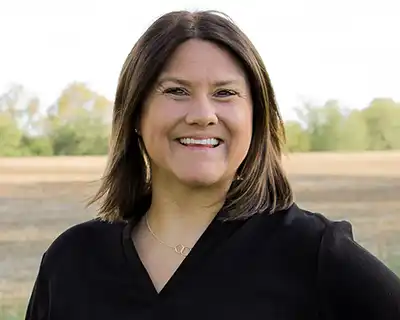Conservation agriculture professionals have a new farmer-centered solution to reach scale with middle adopters
Environmental Initiative, Midwest Row Crop Collaborative (MRCC) and Trust In Food recently unveiled a new tool that optimizes outreach to producers in efforts to scale awareness and enrollment in conservation programs.
As opportunities to participate in conservation programs intensify — whether a result of Inflation Reduction Act funding, Partnerships for Climate-Smart Commodities, carbon programs or other public and private initiatives that incentivize farmers to implement practices — there is exponential opportunity to engage more producers and provide clear messaging about operational fit and the agronomic and financial value of practice adoption.
The challenge: As outreach professionals seek to engage middle adopters to reach broader scaling of beneficial agricultural practices, discerning the best ways to connect is challenging. Every farmer is different based on crop produced, geography and resource concerns and oft-overlooked psycho-social factors of how they identify as a producer. By understanding the affinities of producers, such as whether they see themselves as innovators or are driven by leaving a legacy for their families or their communities, outreach professionals are most successful when emphasizing priorities that producers identify with and care about.
Greg Bohrer, Director of Natural Capital at Walmart, provided the backdrop of the project at the tool’s unveiling during a panel discussion at the Sustainable Ag Summit in December. Bohrer makes grants at Walmart.org that help farmers and ranchers transition to new management practices that address critical natural capital risks and support more resilient production systems.
“We’re in this moment where everything is scaling up and we’re moving beyond pilots. But what that means is we’re also trying to reach a very different kind of producer,” said Bohrer. “We need to have tools for the implementers on the ground to effectively reach new communities of avid actors, new producers and new ranchers.”
A solution: To address scalability for middle adopters, MRCC members and Environmental Initiative staff worked with Trust In Food to understand the interests and motivations of producers in the project area. This included quantitative research and behavior analysis on farm media platforms. The result was a comprehensive persona that detailed how farmers view themselves, their goals for their operation and the best places to reach them.
These insights were used to develop creative engagement assets such as blog posts, emails and display advertising. The goal was to provide options that spoke directly to the values and concerns that were most important to producers on platforms where they prefer to receive information and insights about running their farm businesses.
Our result: During the research phase, producers were tagged according to what the data said about their predominant value sets and motivations. The creative engagement assets that carried values-based messages resonated with producers better than other sets of messaging. It sounds elementary, but it has profound implications on how to encourage producers who may need or want more information to engage and take steps toward action.
“What we saw was that the producers with the predominant set of values reflected in the creative interacted at a rate of ten times higher [than Farm Journal averages],” Rebecca Bartels, Vice President of Trust In Food and Farm Journal Insights, said during the panel. “If you take the time and the energy to really deeply understand what these people are as people and how they are different so we can communicate with them in a way that matters to them, then we can really throw gasoline on sustainability efforts and grow interest in a faster way so we can reach our goals quicker, and we can be sure that every dollar invested in sustainability goes as far as it possibly can, such that it’s creating a pull from producers.”
Sharing with others: Following the positive results of the project, the partners created a tool designed to share the process and findings. The outreach playbook at ReachFarmersFaster.org helps conservation professionals design a data-driven process of engagement that stays focused on the farmers who are interested in making the change on the ground but may not have the information needed to make a decision best aligned with their needs.
“At the end of the day, this [conservation practice adoption] has to work for farmers and the business they do. We all need to be invested in this process,” said Ryan Locke, Director of Sustainability Partnerships and Business Development at Nutrien Ag Solutions, a MRCC member. “The framework to understanding producers is crucial as conversations shift according to regional differences, crops, resource concerns, and operational fit. By communicating with values and motivations, outreach of all kinds can break through some of the resistance that still exists around sustainability integration for farm operations.
“This work informs not just how we communicate programs externally with our customers, but also how we communicate this internally because we’ve learned through this process this is a different conversation that we are asking our agronomists to have with the customer. We have to be prepared for that conversation, and we have to give them the tools and the insights to be able to connect with the grower at another level.”
Locke guides the North American Engagement Strategy for Nutrien’s retail sustainability efforts, which support agriculture producers through Nutrien’s expansive channel of retailers and trusted advisors. He also acts as the company’s global liaison, ensuring alignment in Nutrien’s retail sustainability efforts across its international operating regions.
“With these initial insights, we’re literally taking everything down to the studs and relooking at our messaging … reevaluating our entire communications approach,” Locke says.
As results of the project continue to be shared, Environmental Initiative and Trust In Food are organizing workshops around the country to support organizations who aim to reach farmers faster. The first workshop was held for soil and water district professionals at the National Association of Conservation Districts Annual Meeting in February.
Ultimately the tool provides a platform for conservation professionals to build upon. It’s a starting point for data-driven producer engagement at a time when producers are sorting through multiple opportunities and conservation organizations have resources to commit to practice adoption incentives.
Bartels also discussed the playbook at the Trust In Food Symposium during a panel in February. She said it is a bridge between what conservation programs want to achieve and what producers need and want on the ground in their unique operations.
“The playbook in and of itself is a methodology and a process that we hope organizations of all types will apply in their work,” she said. “It is a stepwise process that has worksheets and tools that teams can use to understand exactly which questions need to be asked, how to find the answers, and then how to measure the results of what’s working and not working along the way. But more importantly it’s a building block to help everyone in the sustainability community go farther faster. If we could always be intentional about sharing what we have learned about what will work so that other people can learn from that success and build on it, then we can all be more successful together.”
Download worksheets and learn more about optimizing your outreach efforts at ReachFarmersFaster.org.



